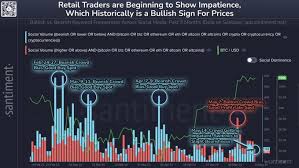Understanding the BTC to USD Exchange Rate

Introduction
The Bitcoin to US Dollar (BTC/USD) exchange rate is a crucial metric for investors and traders in the cryptocurrency market. As cryptocurrencies continue to gain traction worldwide, understanding the fluctuations and trends associated with BTC/USD is essential for making informed investment decisions. The dynamism of this exchange rate often mirrors broader economic conditions, market sentiment, and regulatory changes, making it a focal point for financial analysis.
Current Market Trends
As of October 2023, Bitcoin has been showing a volatile yet upward trajectory against the US dollar. Recent data indicates that the price of Bitcoin has fluctuated between $25,000 and $35,000 over the last few months. The most significant surge was noted when Bitcoin crossed the $30,000 mark for the first time in several months, spurred by increased institutional adoption and a general uptick in crypto market confidence.
The recent announcement from institutional investors such as BlackRock, who are pursuing Bitcoin exchange-traded funds (ETFs), has further propelled the BTC/USD rate. This institutional interest has led to speculation that Bitcoin might reach new all-time highs, reviving investor interest after a prolonged period of low prices in 2022.
Factors Influencing BTC/USD
Several factors influence the BTC/USD exchange rate:
- Market Sentiment: Investor perception significantly impacts Bitcoin’s price. Positive news, such as regulatory clarity in major economies or endorsements by high-profile investors, can lead to increases.
- Supply and Demand: Bitcoin’s scarce supply—capped at 21 million coins—means that as demand rises, so does its price.
- Global Economic Indicators: Macroeconomic trends such as inflation rates and interest rates in the US can have a pronounced effect on the BTC/USD rates. A high inflation environment often drives investors to seek alternative assets like Bitcoin.
- Technological Developments: Innovations within the blockchain and cryptocurrency space can affect Bitcoin’s value. Upgrades, forks, and changes in mining difficulty all play a role.
Conclusion
The BTC/USD exchange rate remains a vital indicator for the cryptocurrency market, reflecting investor sentiment and broader economic conditions. As Bitcoin grows more mainstream, its connection to traditional financial systems and macroeconomic factors may become increasingly pronounced. Investors should continue to monitor regulatory developments, institutional adoption, and market psychology, as these elements will likely define the trajectory of BTC/USD in the foreseeable future. Predictions suggest that if the current trends persist, Bitcoin could see significant appreciation in value, offering lucrative opportunities for those engaged in cryptocurrency markets.









